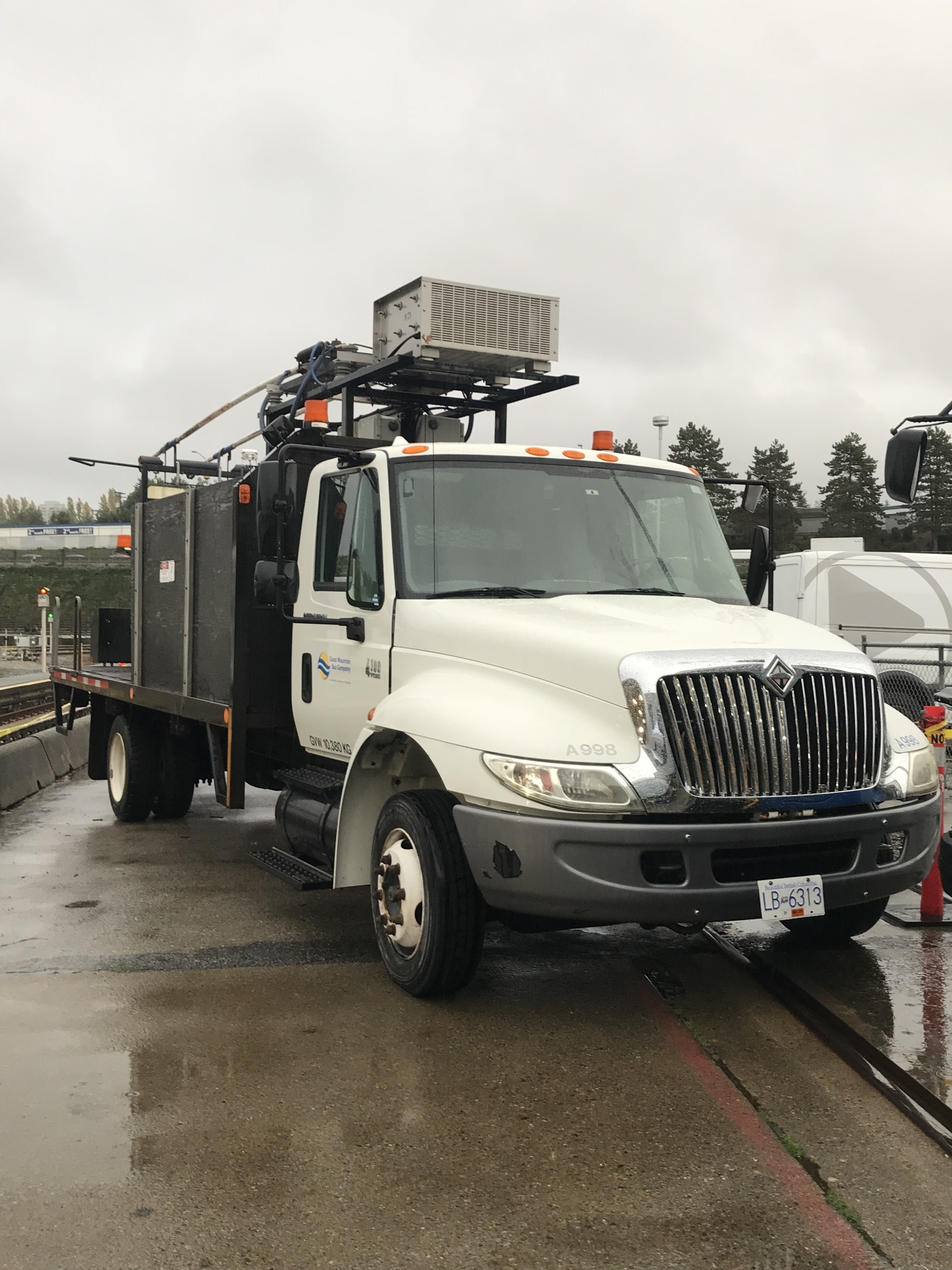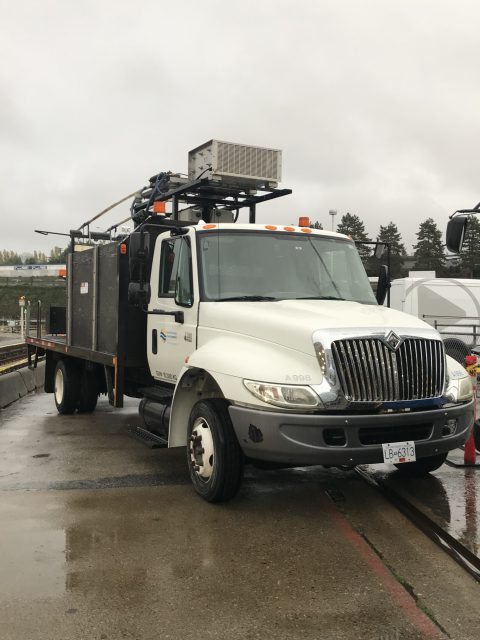How TransLink prepares for winter
How TransLink prepares for winter

While the seasonal calendar says it’s fall, Mother Nature has a sneaky way of saying otherwise. Preparations are well underway to ensure that we’re doing our best to stay one step ahead of the inclement weather.
What we’re doing to help keep you moving
SkyTrain
SkyTrain is an integral part of our transit network, with 70 linear kilometers of track on the Expo and Millennium lines and 19 kilometres of track on the Canada Line.
We undertake various steps to ensure that when wintry weather hits we’re in the position to hit back.
Similar to how commuters change their footwear for rain, snow and ice, SkyTrain does too! Brass collector shoes are installed for winter weather as they are great at cutting through snow and ice. On the tracks, our proprietary de-icing trains spray a glycerin based product to de-ice the power rail to help keep a consistent electrical connection.
New this year, we’re installing heat tracing on the Canada Line where heavy ice buildup led to service disruptions in February 2017.
The heat tracers will gently warm the power rail to help ensure ice doesn’t build up and special covering will also be installed to help protect the power rail. Anti-icing and sanding are done too to ensure the power rail and tracks are clear of ice. Canada Line cars have a braking system similar to ABS brakes on your vehicle that helps avoid slippage in this weather.
Bus
Our bus fleet is 1,400+ strong, and with ridership at record highs we know that keeping you moving is important. New this year is a “tire sock” that we will pilot on buses operating between Production Way–University Station and Simon Fraser University when snowy weather limits access to Burnaby Mountain.
These tire socks have worked well in other jurisdictions and we anticipate they will assist our buses with traction on snowy and icy roads.
Some other preparations we undertake to help our buses through snow and ice conditions include a snow/ice switch controlled by our operators that gives the bus tires better traction in the snow.
When we can, we also switch out articulated buses for traditional buses, which have better traction in snow. Articulated buses allow for quick movement of large numbers of passengers and are great for turning and maneuvering throughout our Metro Vancouver streets, however when travelling up hills or on streets with have poor conditions, the heavy back halves can create some traction problems.
Lastly, when needed, we work with municipalities to create snow routes to coordinate our service with priority corridors for snow clearing, should conditions become severe.
Trolley Buses
We are proud to have one of the largest trolley systems in North America. To help keep you moving during the winter months, we’ve developed a unique and proprietary de-icer truck to help combat snow and ice on our trolley wires.
This system, designed and developed by two former CMBC electrical engineers, has special pads that spread a glycerin based product along the electric wires to help keep the wires free of snow and ice.
FUN FACT: Trolley de-icer trucks can cover 300 kilometers of wire in about six hours over an evening!
And of course, when and where needed extra staff will be deployed, including SkyTrain Attendants and Transit Police, to assist customers in getting where they need to go. We also employ an arborist to maintain all trees and branches within 10 metres of the SkyTrain tracks. In partnership with Canadian Pacific Railway, the same work is occurring for West Coast Express tracks.
HandyDART
HandyDART is a door-to-door service, and as such, it requires frequent travel throughout residential side streets.
New this year, HandyDART staff will be reaching out to frequent destinations for our customers to ensure requirements for salting, sanding and access are met. Also new this year is we will be targeting difficult locations by having staff reach out to customers with problem driveways and access to see if they have a clearing plan. When conditions require reduction to essential service, two drivers will staff each bus to assist customers with loading and unloading.
If you missed our livestream today, you can catch it below.
Take a look back to last year to see how we tackled Mother Nature with some excellent transit tips to manage inclement weather, as well as an in depth look at 6 things TransLink is doing to prepare for more wintry weather.
Know before you go!
If there’s snow or ice, ensure you plan ahead with Trip Planner or m.translink.ca on your mobile device, and make sure to allow yourself extra commuting time.
Sign up for transit alerts so you’ll be the first to know if there are changes in the transit schedule.
Follow our customer information team on Twitter (@TransLink) and save their number (604) 953-3333 on your mobile device.
Are you prepared for wintry weather?
Author: Sarah Kertcher






